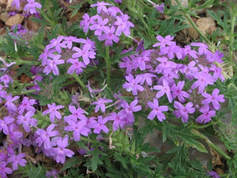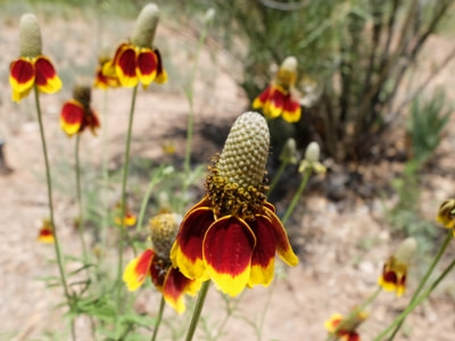|
Found in wet areas, stream sides
Seen blooming on July 23, 2018 by the Rio Chama I don’t know why this is commonly called the Lesser Indian Paintbrush because it is taller than all the other species of Paintbrush. It grows over 3 feet tall with un-branched stems. It differs from other Paintbrushes by being an annual and liking wet places. What appears to be flowers, the paintbrush, are actually leaf-like, red-tipped bracts. The flowers are narrow, green-yellow tubes hidden by the bracts. Leaves are well spaced, growing at alternate intervals along the green stems, and like the stem and bracts, have a covering of short hairs. The Apache used the roots to make a dye to color various kinds of skins, especially deer skin. The pink flowers in the background are Arizona Centaury. If you want to identify a different flower then you might find it useful to check what was blooming this time last year. If you cannot identify a flower from the website send a photo and where you took it to [email protected]. Read online for tips.
0 Comments
Found in dry, sandy soils
Seen blooming on July 14, 2018 in a pasture off Hwy 554 Photo credit: John George If you take a closer look amongst the leaves of the bright green bushes which stand out against the sandy soil, you will see the clusters of small pea-like flowers of the Lemon Scurfpea. It seems to like the arid conditions we have experienced this year because it has been blooming since early June and is still going. It grows to 20" in patches. Leaves are divided into three long, narrow, lance-shaped leaflets. The tiny flowers are white with a splash of purple. Navajos and Zunis treated stomach problems with tea made from plant or by eating the fresh flowers. Arapaho treated sore throats by chewing fresh leaves and used the leaves in a snuff. A cold tea was drunk for menstrual cramps and a lotion made as protection against witches. The root was used to treat venereal disease and to make string and nets. Source. If you want to identify a different flower then you might find it useful to check what was blooming this time last year. If you cannot identify a flower from the website send a photo and where you took it to [email protected]. Read online for tips.  Found in rocky, sandy soils, by roadsides Seen blooming by the boat ramp at Abiquiu Lake Wild Verbena can be erect or creeping with many branches to 18" long. Dark green leaves are deeply divided and hairy. Flowers grow in showy, rounded clusters at the end of the stems and bloom from spring to fall. There are records suggesting that the Acoma and Laguna Indians crushed the leaves with rocks to rub on snakebites and also made an infusion from the leaves to gargle for sore throats. Source. If you want to identify a different flower then you might find it useful to check what was blooming this time last year. If you cannot identify a flower from the website send a photo and where you took it to [email protected]. Read online for tips.  Found on dry slopes, by roadsides Seen blooming on June 30, 2018 by Hwy 554 Grows from 1 to 3 feet tall in a clump with narrow, deeply divided leaves. The flower-head is a purplish-green cylindrical cone up to 2½"' high skirted by drooping, usually yellow, sometimes reddish, petals. It is native but is grown as an ornamental so can escape back into the wild. A pleasant tasting tea is made from the leaves and flower head. The plant has medicinal properties that are pain-relieving and fever-reducing. A tea has been used to relieve the pain of headaches and to treat stomach aches and fevers. The Cheyenne made a tea from boiling plant parts as a wash to relieve pain and to treat poison ivy rash, and also as a wash to draw the poison out of rattlesnake bites. The Sicangu people in South Dakota used a tea of plant tops for headaches and stomachaches. The Acoma and Laguna Indians used crushed leaves rubbed on mothers' breast to wean a child. Source. If you want to identify a different flower then you might find it useful to check what was blooming this time last year. If you cannot identify a flower from the website send a photo and where you took it to [email protected]. Read online for tips. |
AuthorI am Marilyn Phillips, a native of England, whose love of nature and the outdoors from childhood brought me by a circuitous route to Crested Butte, Colorado in 1993 and 16 years later to northern New Mexico. My exploration of the many trails in these areas, my interest in wildflowers and photography, and career in computer system design came together in this creation. If you have any corrections, comments or questions, please contact me by email. Archives
September 2025
Categoriescopyright © 2020
|




 RSS Feed
RSS Feed